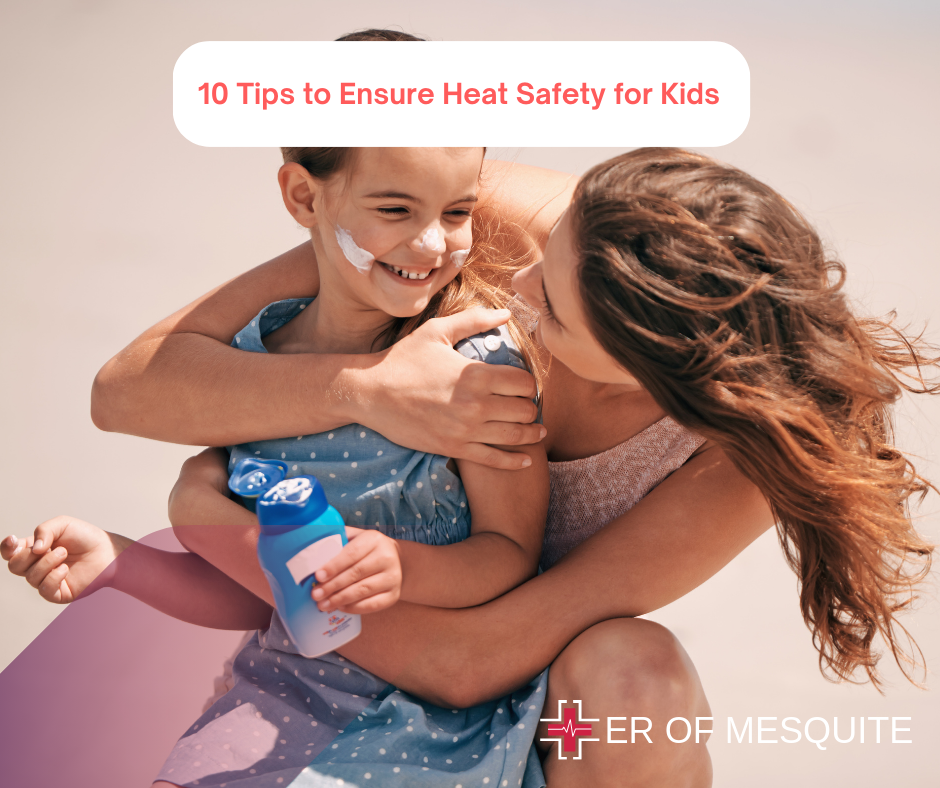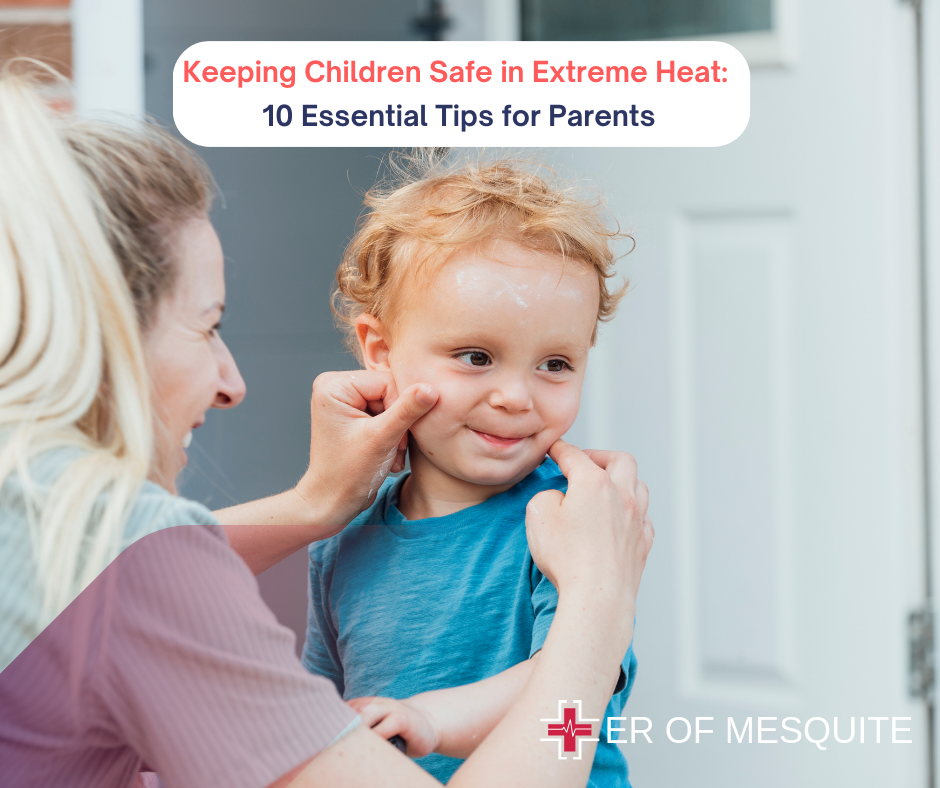As temperatures soar, your kid’s summer fun can quickly turn dangerous. Dehydration, heat exhaustion, and heatstroke pose real risks in extreme heat, but they’re preventable with the right knowledge.
What early signs should you watch for? How can you ensure your child’s safety during scorching days? These questions become crucial as extreme weather events become more frequent.
Whether you’re a concerned parent or just aiming to create a cool environment, this guide will help you recognize early signs and safeguard your kids in extreme heat.
10 Tips to Ensure Heat Safety for Kids

Hydration Is Key
Extreme heat increases the risk of dehydration, which can quickly lead to heat exhaustion or other heat-related illnesses. Encourage your child to drink water frequently throughout the day, even if they are not thirsty. Avoid sugary drinks, sodas, and caffeine as they can contribute to dehydration.
A good rule of thumb is to have your child drink about 8 ounces of water every hour during hot weather. If they’re active outdoors, they may need more frequent hydration. Keeping a water bottle with them at all times can help remind them to drink.
Dress in Light, Breathable Clothing
Proper clothing can make a big difference in managing extreme heat. Dress your children in lightweight, loose-fitting clothes made from breathable fabrics like cotton. Dark colors absorb more heat, so opt for light colors that reflect sunlight.
A wide-brimmed hat can protect their face, neck, and ears from direct sun exposure, while sunglasses will shield their eyes from UV rays. Make sure the clothing is also moisture-wicking to help sweat evaporate, keeping them cooler. Avoid heavy, dark, or synthetic fabrics that trap heat and moisture.
Limit Outdoor Activities
During a heatwave, it’s vital to limit the time your children spend outside, especially during the hottest parts of the day, typically from 10 a.m. to 4 p.m.
Plan outdoor activities for early morning or late afternoon when temperatures are lower. If your child needs to be outside, make sure they take regular breaks in the shade.
Encourage activities that involve minimal physical exertion and provide frequent water breaks. Supervise playtime to ensure they are not overexerting themselves and monitor for any signs of heat-related stress.
Ensure Access to Shade
Whether your children are playing in the yard, at a park, or at an outdoor event, make sure they’ve access to shaded areas. Use umbrellas, tents, or canopies to create shaded spaces where they can rest and cool down.
Shade can help lower body temperature and provide relief from direct sun exposure. If natural shade is not available, portable shade solutions can be a lifesaver.
Apply Sunscreen Regularly
Sunscreen is a must for protecting children from the sun’s harmful rays, which can be intense even on cloudy days. Choose a broad-spectrum sunscreen with an SPF of at least 30 and apply it generously to all exposed skin.
Apply sunscreen 15-30 minutes before going outside and reapply every two hours, or more frequently if swimming or sweating. Sunscreen helps prevent sunburn, which can exacerbate the effects of extreme heat and increase the risk of dehydration.
Recognize and Respond to Signs of Heat Illness
Understanding and recognizing the signs of heat illness is crucial for preventing serious health issues. Symptoms of heat exhaustion in children include excessive sweating, dizziness, headache, nausea, weakness, and irritability.
If you notice these symptoms, move your child to a cooler environment immediately. Offer them water and use cool, damp cloths to help lower their body temperature. If symptoms persist or worsen, seek medical attention promptly.
It’s essential to act quickly to prevent heat exhaustion from progressing to heatstroke, a severe condition that requires immediate medical intervention.
Never Leave Children In a Parked Car
The interior of a parked car can become dangerously hot in a matter of minutes, even with the windows slightly open. Leaving a child alone in a vehicle during extreme heat can lead to fatal heat exhaustion or heatstroke.
Always ensure that everyone exits the car before locking it, and never leave your child unattended, even for a brief period. If you need to run errands or make stops, take your child with you to avoid the risks associated with leaving them in a hot car.
Maintain a Cool Indoor Environment
Keeping your home cool is another critical aspect of heat safety for kids. Use air conditioning or fans to regulate indoor temperatures and ensure your home remains a comfortable environment during summer.
Encourage your children to stay in the coolest parts of the house and avoid strenuous indoor activities that could further increase their body temperature.
Prepare for Outdoor Events
If you’re attending outdoor events during a heatwave, preparation is key. Bring plenty of water, a portable fan, and sun protection like hats and sunscreen. Plan to take frequent breaks in shaded areas and be mindful of your child’s activity level.
Know where the nearest cooling stations or air-conditioned areas are located, and don’t hesitate to leave the event if the heat becomes too overwhelming. Proper planning can make outdoor activities more enjoyable and safer for everyone.
Educate Your Children About Heat Safety
Teaching your children about heat safety for kids is crucial. Explain the importance of staying hydrated, seeking shade, and recognizing when they need to cool down.
Empowering your child with knowledge about how to handle extreme heat can make them more aware of their surroundings and help them stay safe.
Heat Safety Action Plan for Your Family

Extreme heat presents significant challenges, but with these essential tips, you can prevent heat illness in children and ensure their safety during a heatwave. By staying hydrated, dressing appropriately, and monitoring for signs of heat stress, you can help your children enjoy a safe and comfortable summer.
Remember, proactive measures and awareness are key to managing the risks associated with extreme heat and keeping your family safe.
FAQs
What temperature is too hot for children?
Temperatures above 90°F (32°C) can be too hot for children, especially if they are exposed to direct sunlight or engage in strenuous activities.
How to reduce heat in kids?
To reduce heat in kids, keep them hydrated, dress them in light clothing, provide shade, and use cool clothes or fans.
Do kids overheat easily?
Kids overheat more easily than adults because their bodies are less efficient at regulating temperature.
